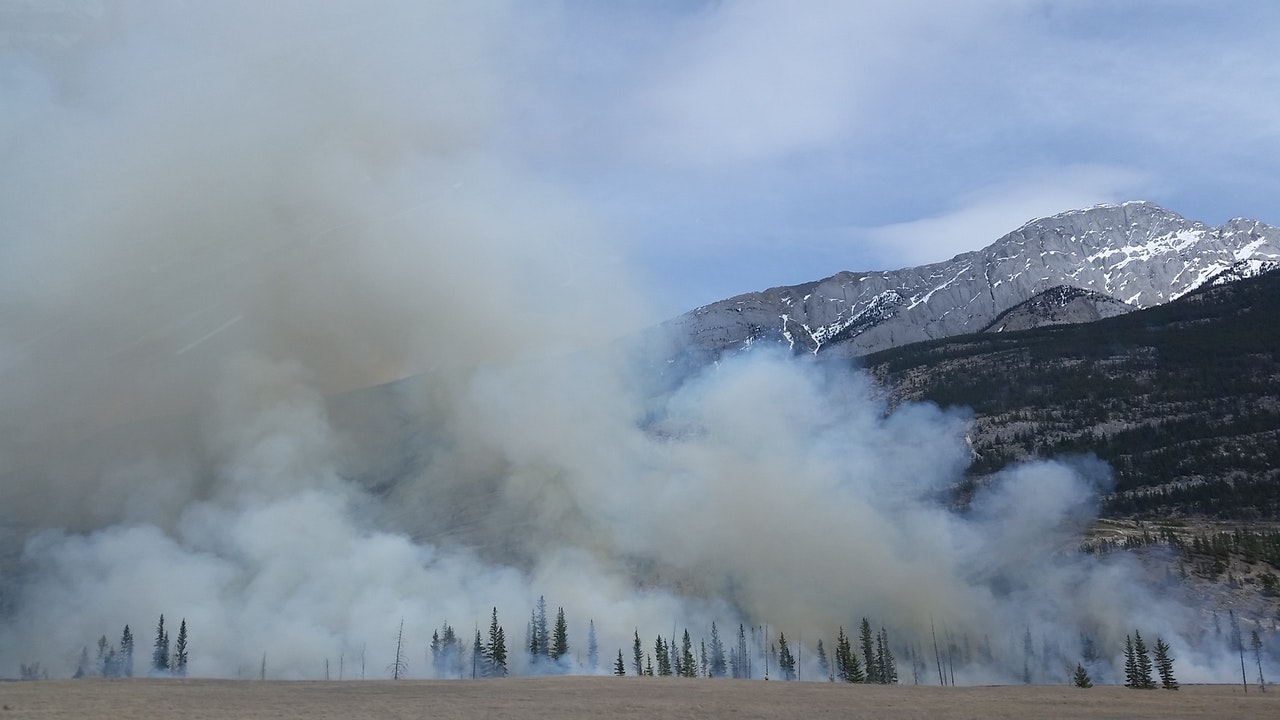Canada News
Climate resilience will need a federal, enforceable framework

The last 18 months in British Columbia leave no doubt, with the heat dome, wildfires and atmospheric river events, as well as more than $9 billion in loss and damages. (Pexels Photo)
This article is based on a talk held at Simon Fraser University that is part of a series of nine delving into the theme of “What should be on Canada’s policy radar?” The panel discussions are being held through this year to mark the 50th anniversary celebrations of the Institute for Research on Public Policy, publisher of Policy Options magazine. The discussion at Simon Fraser University focused on building climate resilience. Panelists included: Patrick Michell, member of the Kanaka Bar Indian Band; Chad Park, vice-president of sustainability and citizenship at The Co-operators; and Magda Szpala, director of sustainability and resilience at BC Housing. The moderator was Nancy Olewiler, economist and professor at the school of public policy at Simon Fraser University. You can also watch the panel discussion.
Climate resilience needs to be built into policy decisions more than ever. The last 18 months in British Columbia leave no doubt, with the heat dome, wildfires and atmospheric river events, as well as more than $9 billion in loss and damages. Communities need the ability to prepare, absorb, adapt and recover from a disastrous event if they are to become climate resilient. As well, the voices of the most vulnerable must be incorporated into all climate-resilience decisions because we know that climate impacts do not occur equally.
The importance of this last point was consistently underpinned by all panelists at the Simon Fraser University (SFU) panel discussion.
Mitigation and adaptation are two fronts on which we need to act, said Chad Park, vice-president of sustainability and citizenship at The Co-operators. Yet, they are typically considered separately, with mitigation being action on a hazard, and adaptation being action on vulnerability. That has to change.
Canada’s ineffective energy regulations are the elephant in the warming room
Canada needs a world-class climate law
Ottawa’s climate strategy must be led by a coalition of the most trusted
British Columbia is arguably a leader in Canadian climate policy, but funding is a key barrier to achieving stronger climate resilience. For example, the federal disaster mitigation and adaptation fund has committed less than $3.5 billion over the span of nearly a decade for projects that demonstrate risk-reduction and promote resilience. It’s a good first step in a more proactive direction, but it won’t be not enough to support provinces in achieving climate resilience, said Magda Szpala, director of sustainability and resilience at BC Housing.
Another obstacle is the common perspective that climate disasters are a future issue that needn’t be worried about in the short term. In other words, when these events unfold, they are addressed with reactive policy and compensation – when what should already be happening is anticipation and mitigation investments. But political and government planning cycles are rather short, making long-term thinking a challenge. It is incredibly difficult to convince decision-makers to invest proactively, even though the return on investment is impressive for resilient-mitigation projects.
Fundamental change and a paradigm shift are necessary, said Patrick Michell, member of the Kanaka Bar Indian Band, just south of Lytton, B.C. Vested interests act as a barrier to building climate resilience, he said, because climate-resilient materials, jobs and industries do not coincide with Canadian economic goals.
The interests of local governments similarly make climate resilience harder to achieve, said Nancy Olewiler, professor and economist at SFU’s school of public policy. Local governments can, and often do, approve property development in known hazard areas, benefitting from the tax revenue. This failure to restrict new construction in hazard-prone regions is an example of how disasters are often deemed a future issue.
It’s important to note that climate, hazard and emergency management fall under provincial/territorial jurisdiction within the federal Emergency Management Act. This is understandable, given how each province has different weather, populations, political agendas and budgets. Yet, how can Canada effectively keep resilience on its agenda if the politics of climate and emergency management are decentralized?
A national infrastructure assessment would help drive more sustainable construction
Cost-benefit analysis is the wrong tool for tackling climate change
Szpala suggested a strategy modeled on the pandemic response, with mobilization of federal funding support, new enforceable regulations, a co-ordinated nationwide mandate while allowing jurisdictional-specific responses. In short, a federal, enforceable framework that prioritizes and mandates resiliency is needed to ensure resilience stays on Canada’s policy radar.
Overall, to address the barriers that make building climate resilience difficult, we need to increase the funding models for the mitigation and adaptation phases of disaster management. Moreover, the idea that major climate events are a future issue needs to change, likely through conversations about Canada’s political and economic interests. Local governments ought to shift their thinking as well, and should be held accountable for their decisions on land development. Ultimately, equity needs to underpin all of these potential solutions.
All of these factors warrant further exploration and conversations to ensure policy decisions that bolster climate resilience can begin to take shape.
This article is part of What Should Be on Canada’s Policy Radar? special feature series.
This article first appeared on Policy Options and is republished here under a Creative Commons license.





















